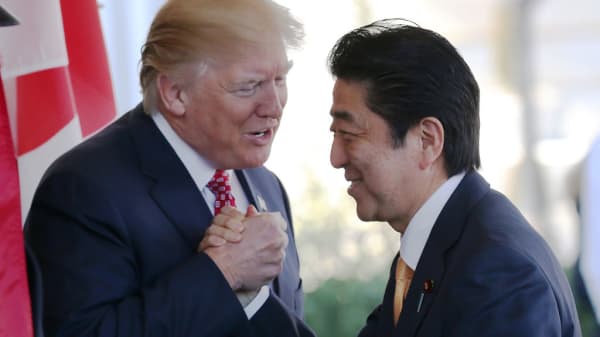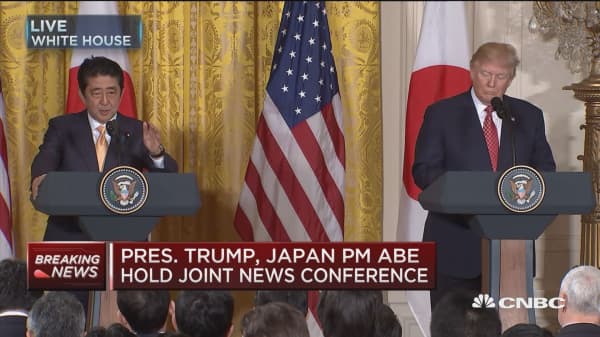President Donald Trump has promised Americans that he will renegotiate long-standing pacts with major U.S. trade partners to get better deals for America.
As he meets with Japanese Prime Minister Shinzo Abe, U.S. producers of nearly $300 billion worth of goods and services sold to Japan are eagerly waiting to find out what that new trade horizon might look like.
No matter what terms the Trump administration manages to negotiate with Japan, it will cover a complex list of hundreds of separate products and industries, from aircraft to medical equipment to corn.
That's why any new trade deal will have a major impact on U.S. exporters.





